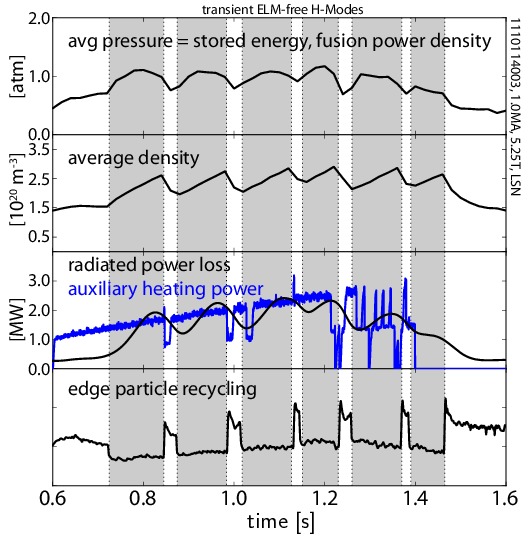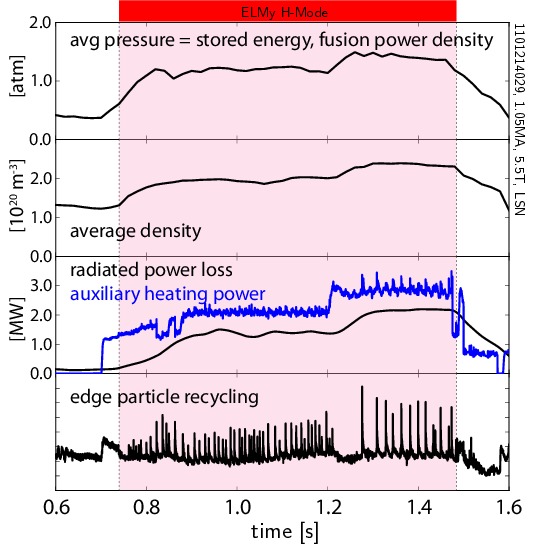John Walk
H-Mode
As we saw previously, the formation of the pedestal in H-mode dramatically improves fusion performance - the pedestal supports much higher core pressure (and therefore greater fusion power density), while the suppression of turbulence in the edge improves energy confinement by a factor of two or more, along with increased particle confinement.

This presents problems, however: the plasma retains impurities (metal wall material, helium "fusion ash") as well as fuel ions, leading to radiative losses that eventually overcome the heating power, dropping the plasma back into L-mode. This H-mode is an inherently transient state.
So what we need is high energy confinement specifically, with low particle confinement (low enough, at least, to avoid impurity buildup). And that's it, right?
Under the right conditions, the plasma develops Edge-Localized Modes (ELMs) - periodic instabilities that relax the pedestal, driving a burst of energy and particles out of the plasma. This is sufficient to prevent impurity accumulation.

On current experiments, the ELMy H-mode is the baseline for high performance, and was thought to be acceptable for fusion reactor use. However, on a reactor-scale device, these ELMs drive enormous pulsed heat loads - effectively like detonating a hand grenade in the exhaust several times per second, far in excess of material tolerances for the reactor wall.
So what we need, then, is high energy confinement, low particle confinement, and to avoid (or mitigate or suppress) large ELMs. Fortunately, a number of solutions exist: engineering fixes (external controls that suppress or smooth out the ELM cycle), and physics solutions in the form of steady H-modes without ELMs, where the pedestal is regulated by some benign fluctuation below the ELM limit (the standard example studied on Alcator C-Mod is the "Enhanced \(D_\alpha\) or EDA H-mode). A number of these regimes exist, but each has its pros and cons - high-performance operation without ELMs, then, is a major research focus. In particular, my research focuses on the novel I-mode regime recently discovered on Alcator C-Mod.
Up next: I-mode